Leveraging Heuristics and Cognitive Biases to Influence Shopper Decision-making
Cognitive biases and heuristics are part of our everyday lives. They affect us all – you and me included. From the moment we get up, to how we make decisions in our working and everyday lives. It’s simply part of being human.
Knowing about them helps us in our personal “day to days”. It also helps us understand how they can be leveraged to influence the decisions that our customers or shoppers make when they go shopping.
But before we delve into the details of different biases, it’s worth understanding a bit more about them in general.
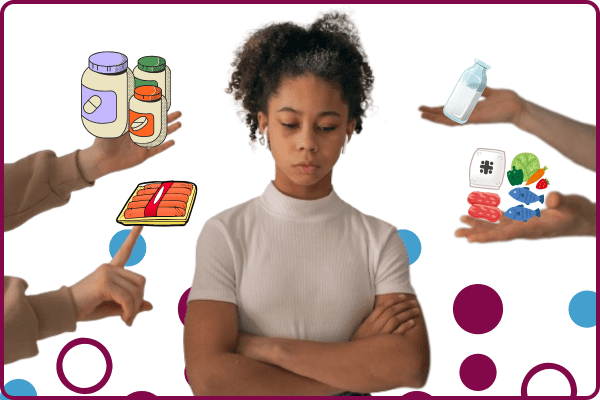
So, What Are Cognitive Biases and Heuristics, and Where Did They Come From?
Back in the day, “homo economicus” was alive and well – (s)he being the epitome of rationality, and the model of human decision-making upon which much of the classical theories of economics are based. In this version of events, our decision-making was thought to be wholly rational, logical, and fully informed. And yes, this included how we were thought to make decisions when shopping for consumer goods and services too.
And then, along came behavioural economics.
Behavioral economics has its roots in the work of several eminent psychologists and economists such as Herbert A. Simon, Daniel Kahneman, Amos Tversky, Richard Thaler, Gerd Gigerenzer. It challenges and disagrees with the assumption that humans (and yes, this includes you and me) are always rational actors. Over time, this body of work has permeated the commercial world. And, it has huge implications for how marketers can affect the consumer and shopper behaviour change required to meet brand and category objectives.
Behavioural economics recognises that we humans are “cognitive misers”. Believe it or not, our brains are inherently lazy (it has to do with energy efficiency, but that’s perhaps for another day). As Daniel Kahneman so eloquently put it in his book, Thinking Fast and Slow:
Thinking is to humans as swimming is to cats; they can do it, but they’d prefer not to.”
And this relative laziness is what leads to heuristics, which in turn can lead to cognitive biases.
What Are Heuristics?
Heuristics are mental shortcuts, or ‘rules of thumb’ that we all use daily to simplify decisions when time or information is limited, or when there is an element of uncertainty involved. They allow us to function without having to think too deeply about each and every one of the myriad decisions we make in our daily lives, including our shopping lives.
For instance, we’ll often see brands using the social proof heuristic. They will claim (if they can), for example, that their brand is the No. 1 brand in the category. This tactic leverages a shopper’s tendency to rely on others’ behaviour when time or information is too limited for a more analytical decision to be made. It also appeals to those who may feel uncertain about a purchase and want to avoid wasting money. So, social proof acts as a shortcut to making a ‘good enough’ decision based on other people’s choices.
What is a Cognitive Bias?
A cognitive bias is an “error” in decision making which can result in sub-optimal, and some say, irrational choices. (Although the irrationality of some biases in different contexts is often debated).
Heuristics are a significant contributor to cognitive bias, so… let’s imagine Rachel.
She is a busy 35-year-old mum shopping in the cereal aisle, trying to decide what to buy. She’s pushed for time, and a little flustered because her 5-year-old is starting to get restless. Suddenly, she sees a box with a big sign that reads, “UK shoppers #1 Choice”. Now, although this cereal isn’t the healthiest option and costs more than others, Rachel picks it because she assumes that if so many people are buying it, it must be good.
This is an example of the social proof heuristic leading to a cognitive bias (Bandwagon Effect) in Rachel’s decisions. She chooses a popular but less nutritious and more expensive cereal, rather than something which aligns with her health goals and budget.
To be clear – it’s not just heuristics that lead to cognitive bias. Other factors, including emotional states, social pressures and evolutionary influences also play a role. Millennials of social-living experience have shaped us, hardwiring many cognitive biases into our brains.
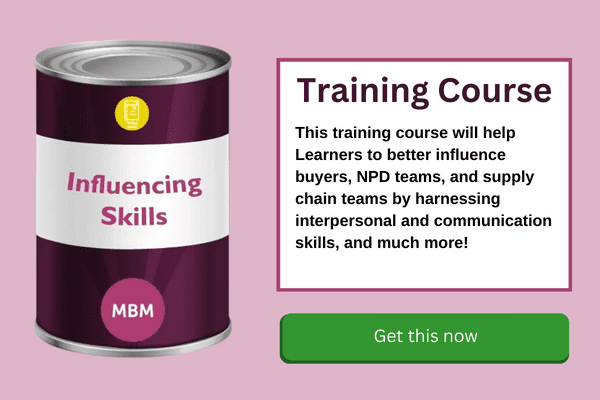
Sticky Learning ® is 7 times more effective than 1-day training courses. Plus, you will get a Chain of Evidence proving your Return on Investment. Discover soft skills training that changes behaviours long term.

How Can We Put an Understanding of Cognitive Biases and Heuristics to Good Use Along the Path to Purchase?
Firstly, let’s be clear. Using heuristics and cognitive biases in shopper marketing should aim to simplify decision-making, not manipulate consumers. So, we should avoid exploiting these biases to pressure consumers into wasteful (or even harmful) purchases.
At the risk of being controversial, a case in point might be some “healthier” food marketing practices. In the age of increasing obesity levels across several markets, it is well documented that food manufacturers and retailers have a role to play in supporting consumers’ weight management efforts. However, much of the messaging around “healthier” options (especially on packs) are often described by single characteristics. This can lead consumers to fall prey to what is known as the health halo cognitive bias.
Single, headline product features e.g. ‘Light/lite’, ‘low fat, ‘low/no sugar’, ‘low/no calories’, ‘protein’ or even ‘organic’ are frequently seen on food packaging. And here’s the rub: these single features carry a halo effect whereby consumers may assume that this single benefit confers overall healthiness. Either by design or accident (and one would hope the latter), such practices can lead consumers to over-consume to the detriment of their long-term health.
Responsible marketing should, instead, use these tools to help shoppers make efficient decisions that meet their needs. And, with that in mind, the rest of this article outlines some cognitive bias types that are particularly relevant for category and shopping marketing. I’ll outline what they are, and how they can be used to drive positive behaviour for your brands.
Jump Menu:
- 1- Anchoring Bias
- 2- Authority Bias
- 3- Availability Heuristic
- 4- Bandwagon Effect / Social Proof Heuristic
- 5- Decoy Effect
- 6- Hyperbolic Discounting / Present Bias
- 7- Loss Aversion
- 8- Framing Effect
- 9- Endowment Effect
- 10- Scarcity Heuristic
- 11- Goal Gradient Effect
- 12- Mere Exposure Effect / Familiarity Principle
1- Anchoring Bias
This cognitive bias causes us to put disproportionate emphasis on the first bit of information available when making a decision. We evaluate any information or options we subsequently come across in the context of this “anchor”, rather than evaluating them objectively.
-
Some Practical Examples
Anchoring is at play when we present promotional prices to shoppers. We often present the base price first, using it as an anchor that the promoted price can be compared against. In this context, shoppers perceive the promoted price as a better deal than if they saw it alone.
We can also introduce subtle cues into the shopping environment that influence volumes bought. In this experiment, shoppers were presented with an invitation to purchase under two different controlled conditions. Those who had been primed with the number 18 subconsciously anchored on this number and went on to buy 85% more ice creams than those invited to simply buy ‘some.’
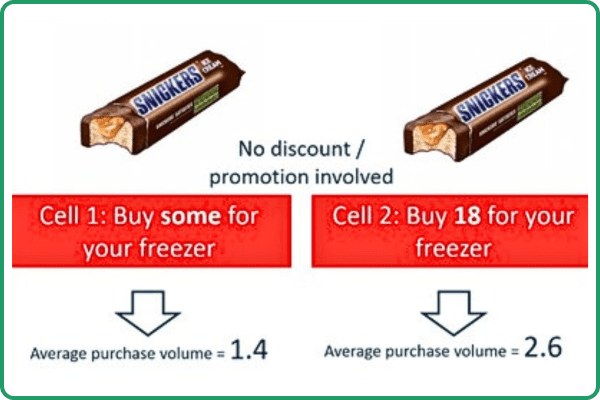
Anchoring can also play a key role in merchandising and layout strategies, particularly in repertoire categories. Picture yourself shopping for bathroom paint at a DIY store. You reach the paint section and browse the first brand. You pick up a tester pot in a colour that catches your eye. As you continue exploring other options, that first pot becomes your reference point, or “anchor”. Every subsequent option is compared to it. Brands that are positioned first in the shopping flow benefit from this, as shoppers are disproportionately likely to select the anchor.
2- Authority Bias
This cognitive bias describes our tendency to trust the judgment and opinions of authority figures without taking the time and effort to make an objective evaluation of what they have to say. As for many biases, it is a cognitive bias that likely has its roots in our past.
-
Some Practical Examples
You’ll be familiar with examples of how authority bias is used in marketing, including shopper marketing. Offering shoppers reassurance that experts are using or endorsing a brand, for example, is a powerful tactic. This is especially pertinent in personal care and healthcare categories. Think “dentist approved”, or “dermatologist approved” type messaging.

And, in today’s digital world, the use of influencers is another common tactic that utilises authority bias. That said, be careful to avoid the risks of devaluing brand trust if said influencers are not respected in their fields.
3- Availability Heuristic
This is a mental shortcut which explains our tendency to place a disproportionate focus on emotional cues, familiar facts and vivid images that come to mind quickly when making decisions.
-
Some Practical Examples
The obvious application of availability heuristic links to the thinking around mental availability and category entry points championed by the Ehrenberg-Bass Institute for Marketing Science.
Making your brand first to mind when it comes to specific demand moments or occasions triggers the availability heuristic. Shoppers are therefore more likely to think of your brand as the obvious choice.
4- Bandwagon Effect / Social Proof Heuristic
See the above discussion for how this cognitive bias and its associated heuristic, social proof can be leveraged to drive behaviour change. And here’s a great example of social proof in action:
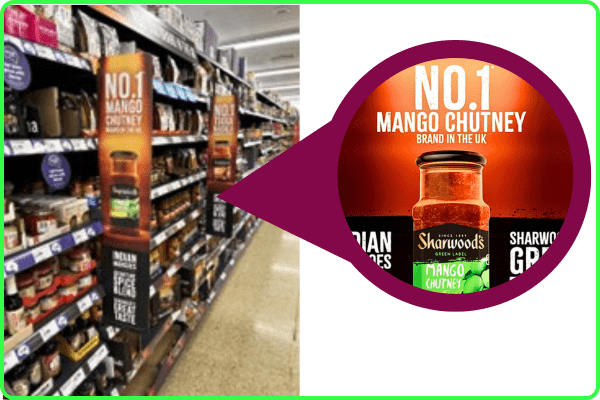
5- Decoy Effect
A cognitive bias often leveraged for managing price perception, the decoy effect influences price perception by introducing a third option that makes one of the other two choices seem more appealing. Positioning a less attractive option near a higher-priced item nudges customers toward choosing the more expensive option.
-
Some Practical Examples
Imagine you are selling Easter Eggs. You have a small egg with an RRP of £2.00 and a large egg with an RRP of £6.00. But, you’re worried that the large egg (what you really want to sell) seems expensive (3 times as much!). So, to leverage the decoy effect, you introduce a third option (decoy) – a medium-sized egg for £5.00. This alters the shopper’s perception of value. Now, the large egg (target) looks like great value at only £1 more than the medium egg. Job done!
If you want to learn from the masters of applying the decoy effect, then look no further than Apple, Starbucks and The Economist.
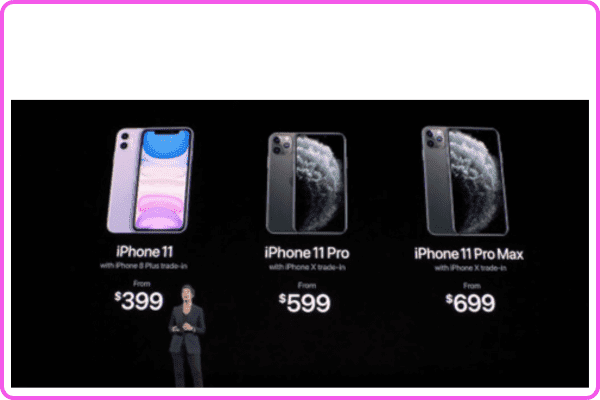
6- Hyperbolic Discounting / Present Bias
This bias is all about our tendency to prefer immediate vs. delayed reward, even if the delayed reward has more value. In other words, if offered £100 today vs. £120 in a month, most would opt for the £100 today. This happens because our subconscious values immediate rewards more, causing us to undervalue future benefits. (It is why many struggle to commit to diet regimes, for example. The appeal of a cream cake today outweighs the goal of a leaner physique in six months).
-
Some Practical Examples
When it comes to added-value promotions, instant gratification tactics are particularly effective. Offering immediately redeemable rewards tends to drive purchase conversion more effectively than competitions which might take months to declare a winner (all else being equal). These strategies leverage the power of reward immediacy.
On the other hand, consider payment schemes for large ticket items e.g. ‘buy now, pay later’. These approaches harness the power of pain (payment) delay.
7- Loss Aversion
This cognitive bias also has its roots in our distant past: our ancestors’ very survival depended on their prioritising risk (losses) over gains. To this day, we are left with a tendency to attach up to twice as much power to the pain of losing as we are to the pleasure of gaining something of equal value (although there are differences of scale according to factors such as immediate context, culture and socioeconomic status).
-
Some Practical Examples
Cognitive biases often work in tandem rather than independently. So, for this one, it feels more informative explained with practical examples of loss aversion, paired with three other biases.
- Framing effect
- Endowment effect, and
- The scarcity heuristic
8- Framing Effect
The framing effect cognitive bias describes how our perceptions and decisions are influenced by different ways of presenting the exact same information or products.
-
Some Practical Examples
‘Framing’ a message positively or negatively impacts shopper decisions, with some links to loss aversion. For example, there is a very good reason why Dettol packs focus on the 99.9% of bacteria the wipes actually kill, rather than focusing the consumer’s mind on the 0.1% of bacteria they risk leaving behind.

9- Endowment Effect
This cognitive bias refers to the tendency to value items we already own more than those we don’t. (A bird in the hand is better than two in the bush, as they say!).
-
Some Practical Examples
This bias is often used by subscription services offering a free trial. Over the course of the free period, consumers start to feel a sense of ownership. In consequence, driven by loss aversion, they’re more likely to continue with a paid subscription to avoid losing access.
If I’m perfectly honest, I’ve fallen prey to this exact bias myself of late… subscribing to a free trial of a “yoga at home” app and then finding myself making a decision to pay £15/month for an ongoing monthly subscription. And I kid you not… all this despite the fact that I’ve used it precisely once!
10- Scarcity Heuristic
The scarcity heuristic originates from our evolutionary past. People viewed scarce resources (like a passing mammoth) as highly valuable and worth pursuing.
-
Some Practical Examples
Today, this translates into marketing tactics such as limited editions, “ends soon”, or WIGIG messages. These tactics heighten the perceived value of the products involved and trigger fear of missing out. Famously, Lidl and Aldi are amongst the best in class for exploiting the scarcity heuristic.
Let’s be honest with ourselves, who hasn’t been caught out by the Middle of Lidl at least once?
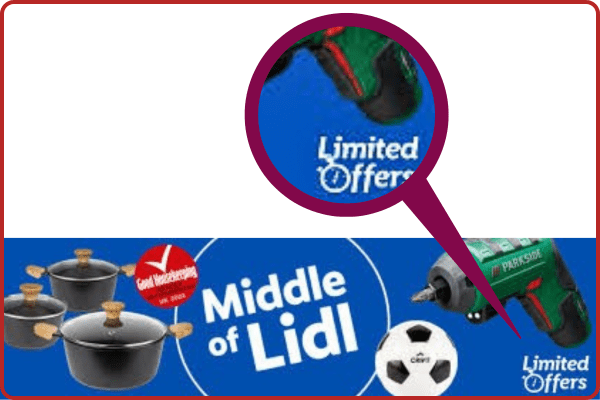
Moving beyond biases and heuristics linked to loss aversion…
11- Goal Gradient Effect
This cognitive bias references our tendencies to become more motivated to achieve a goal as we make progress and get closer to completion. Breaking tasks into smaller steps enhances these tendencies by providing a sense of progress.
-
Some Practical Examples
In a retail context, leveraging this bias can help improve rates of repeat purchases within loyalty schemes that offer rewards for “n=x” purchases:
A famous experiment showed how presenting a carwash loyalty card in different ways to customers had a significant impact on behaviour:
Customers at a garage were given loyalty cards requiring eight car washes to be completed for a reward. Half received a card with 10 stamps with two already pre-stamped. The other half got a card with only eight stamps, and none pre-stamped. Despite both groups needing the same number of car washes, those with pre-stamped cards were twice as likely to complete the required washes. The pre-stamped cards created a sense of progress toward the reward, boosting purchases without extra cost for the garage.
12- Mere Exposure Effect / Familiarity Principle
This cognitive bias explains that the more often we have been exposed to something (even at a subconscious level), the more we tend to like it.
Behavioural scientists believe there are two key reasons why it occurs:
1. It Reduces Uncertainty:
Evolution has programmed us to be cautious around new things, as they could be dangerous. For example, early humans who took risks with unfamiliar food options were less likely to thrive, or even survive. This has led us to develop more positive feelings toward things we’ve encountered before.
2. Familiarity Makes It Easier to Process Information:
Our brains are quicker at processing things we have encountered before (processing fluency). And here comes the really interesting part:
Because fluency means less mental effort, our brains ‘like it’ without our even knowing (remember the “cognitive misers”?). But then, our brain misattributes that liking to the ‘things’ we’ve been repeatedly exposed to.
In other words, what we consciously experience is “I like the product”… just because our non-conscious brain thinks “I like familiarity”.
-
Some Practical Examples
The mere exposure effect suggests that the more frequently a brand is seen or heard, the more likely it is to be liked, (though there is a risk of overexposure). In retail, this can happen during a single store visit. POSM seen before reaching the main aisle can increase the likelihood of shoppers liking and choosing the advertised brand.
Additionally, it supports the idea of maintaining a consistent theme across different marketing touchpoints along the purchase journey – even if key messages across touchpoints differ. Again, having some commonality helps reinforce the mere exposure effect and boosts familiarity (and therefore liking).
And last but not least, here’s a key watch-out for anyone looking to re-design packs or change the brand logo! Ignoring the mere exposure effect contributed to Tropicana’s 2009 packaging redesign failure and subsequent sales decline. The new pack retained no familiar cues and, among other things, disrupted the “familiarity = liking” equation.

The Wrap-up
There are many heuristics and biases, too many to cover fully here. However, understanding how shoppers’ decisions are influenced by these factors can reveal powerful ways to shape their choices.
Further Reading and Resources:
- www.thedecisionlab.com
- www.behaviouraleconomis.com
- www.gustdebacker.com/cognitive-biases/
- www.irrationallabs.com




